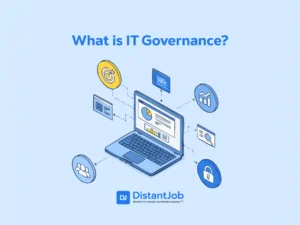Human error is the leading cause of security breaches. According to Mimecast, human error causes 95% of all data breaches. Building a security-first culture is no longer optional or an afterthought. In an era of relentless cyber threats and high-profile breaches, it’s a strategic imperative.
A security-first culture means security is embedded into every process and embraced by every employee, not just the IT department. Business leaders who prioritize security protect their company, reduce risks, and lead their teams to do the same.
There is an escalating skills shortage in cybersecurity talent, and modern companies expand their attack surfaces by the day (due to web apps and cloud adoption). According to Fortinet, nearly 70% of security leaders report that cyber skills shortages increase risks to their business, and over half struggle to recruit and retain qualified staff.
Meanwhile, threat actors eagerly exploit any weakness. According to Verizon, 60% of breaches involve the human element, from unwitting clicks on phishing emails to poor password practices. Cultivating a pervasive security mindset across the workforce is one of the most impactful defenses a business decision-maker can champion.
The Strategic Importance of a Security-First Culture
Fostering a security-first culture means making security everyone’s responsibility. Employees, contractors, and third-party partners must understand their role in cybersecurity. Beyond mere compliance checkboxes, it’s about integrating security awareness into daily operations.
For example, staff in any department should feel accountable for safeguarding data and following secure practices, whether they’re handling customer information or configuring a cloud service.
Leaders must know that cybersecurity is not just a technical issue but a business priority. The cost of neglecting it is high: 59% of companies in 2024 suffered a ransomware attack, according to Sophos. According to Comparitech, the first quarter of 2025 was even more dire in ransomware attacks, with 2,190 incidents globally, a 100% increase from Q1 2024. Ransoms reached an average of $2.14 million per incident. Some high-profile cases, such as Slovakia’s Geodesy, Cartography, and Cadastre Office, reached the $12 million ransom demand.
Businesses can reduce these incident risks by ingraining security consciousness into the company DNA. Security considerations are woven into planning, development, and employee behavior at all levels. When security is a priority, the company is far less likely to be blindsided by a preventable incident.
A strong security culture also supports business continuity and customer trust. Clients and partners are increasingly concerned with how well a company protects their data. Demonstrating a security-first ethos can become a competitive advantage in earning trust. This is done through certifications, transparent policies, and responsive risk management.
In short, a security-first culture is foundational to sustainable digital success, allowing innovation to proceed without leaving the company exposed.
Leadership Sets the Tone for Security
Building such a culture starts at the top. Leadership’s commitment is vital in cultivating a security-first ethos across the organization. If executives treat security as a checkbox or an afterthought, the rest of the company will follow. Leaders must consider the impact on security, cybersecurity training for employees, and needed safeguards.
Include security metrics in high-level KPIs and dashboards. Security matters as much as sales or growth metrics: track metrics like phishing test success rates, incident response times, or compliance scores. Review them in leadership meetings. When the C-suite consistently inquires about security readiness and risk, it creates accountability throughout management levels.
When leaders ask practical questions like “What security training do we need for this tool?” or “How will this new system affect our defenses?” they reinforce that security is a strategic business issue.
For example, Google has built a “vibrant and inclusive security-focused culture” by requiring security training for all staff during onboarding and throughout their careers. It also holds internal tech talks and “Privacy Week” events to engage employees on security topics, illustrating how leadership engagement can permeate the organization.
By framing strong security as key to enabling the business’s vision (rather than hindering it), leadership can inspire everyone to take ownership of cyber defense.
Empower Employees with Training and Awareness
No security-first culture can thrive without cybersecurity training for employees at all levels. People are both the greatest asset and the potential weakest link in security. Regular, relevant training transforms employees from passive targets into active defenders.
Well-trained employees can recognize and neutralize threats early, whether by spotting a phishing email, using strong authentication, or reporting anomalous behavior.
Effective cybersecurity training for employees should be continuous and engaging, not just an annual checkbox. Key topics include how to recognize phishing and social engineering, best practices for passwords and multi-factor authentication, safe internet and email usage, and incident reporting procedures.
Interactive, practical training (workshops, simulations, “gamified” exercises) helps turn abstract rules into habits. Run interactive sessions and workshops where employees practice spotting and reporting threats, which “makes it easier to create your human firewall”.
Companies should also embed training into daily routines – for example, short micro-learning modules or posters in common areas – instead of one-off annual lectures. Positive reinforcement is key: recognize and even reward employees who report phishing tests or follow best practices.
Also, consider training security champions or ambassadors in each department to see higher engagement, because these champions “relay feedback, concerns, and best practices” and make security relatable.
According to Rob Rashotte, vice-president for global training and technical field enablement at Fortinet, over 60% of organizations have rolled out security awareness training for all employees in the past year.
Employees become a true first line of defense with such training, forming cyber skills gap solutions. For example, educating staff on phishing and social engineering can significantly cut down incident rates. Many attacks can be prevented before they escalate if the employees are properly trained. Ultimately, an investment in widespread security education pays off by preventing incidents and creating a vigilant workforce.
Case Study: Salesforce’s Security-First Training Initiative
A notable example of training bolstering culture comes from Salesforce.com. As a leading cloud company, Salesforce recognized that employees are often the entry point for cyberattacks and that security is critical to its success.
Salesforce launched an interactive program called “Detection Everywhere”. It aimed at shifting mindsets across the organization. In partnership with a security training firm, they developed a 90-minute immersive workshop. Cross-functional teams stepped into the shoes of attackers, designing mock cyberattacks and then identifying how to defend against them. This experiential learning approach helped employees viscerally understand threats and the role each person plays in preventing them.
After the training, Salesforce covertly ran phishing email tests to gauge behavior. The employees who went through the program clicked on malicious links far less often and reported security issues at a higher rate than those who hadn’t.
Surveys found 81% of participants felt better equipped to spot threats in their daily work, and 72% said they had actively taken steps to reduce their cyber vulnerabilities afterward. Well-designed training can truly embed security awareness into the culture. Employees become more alert and make safer choices by habit. Salesforce’s initiative underscores that with creative, hands-on training. A large company can align its people with its security-first vision and measurably improve its human defenses.
Strategies to Retain Cybersecurity Talent
While every employee needs basic cyber awareness, organizations also rely on dedicated cybersecurity professionals – analysts, engineers, security officers – to safeguard the enterprise. Unfortunately, these specialists are in short supply globally, and talent competition is fierce.
Cybersecurity Ventures estimates the cyber workforce shortfall will reach 3.5 million people by 2025 worldwide. For leadership, this means that attracting and especially retaining cybersecurity talent should be a top priority. Losing key security team members can leave gaping holes in defenses and institutional knowledge.
Retaining cybersecurity talent requires a deliberate, people-centric strategy. Based on industry insights, here are the key tactics to retain cybersecurity talent.

Invest in Growth and Development
Show your cyber teams a future inside your organization. Provide continuous training, certifications, and clear career pathways so they can advance without leaving. It also addresses cyber skills gap solutions.
For example, supporting employees in earning well-regarded certifications or pursuing new technical skills not only improves your security capabilities but also increases staff loyalty.
Nearly 95% of leaders say industry certification programs have had a positive impact on their organization. Certifications benefit both an individual’s career and the company’s skill set. Mentorship programs are another powerful tool: pairing less experienced analysts with seasoned mentors (internal or external) builds capability and shows junior staff that the company is invested in their success.
When people see a long-term professional development path, they are more likely to stay and grow with your organization.
Foster a Supportive, Mission-Driven Culture
Burnout is rampant in cybersecurity, where stress levels can run high during incidents. Creating a supportive work environment can make all the difference. The leadership should step up to support the team during a crisis (like a major breach attempt), whether by bringing in extra help, ordering dinner for employees working overnight, or mandating rest breaks after intense periods.
Recognize the toll that cyber incidents can take: forward-looking organizations even arrange post-incident counseling or debriefs, acknowledging potential PTSD or burnout and helping staff recover. Beyond crisis moments, day-to-day culture counts too. Cyber professionals, like anyone, are motivated by a sense of purpose.
Framing their work as protecting the company’s mission and customers gives greater meaning to daily tasks. Celebrate wins (like preventing an attack or closing a vulnerability) to reinforce that their work matters. A positive culture where the security team feels valued, heard, and part of the larger mission will retain more employees than a higher paycheck alone.
Offer Competitive Compensation and Benefits
Salaries for skilled cybersecurity roles have climbed due to demand. While culture and growth often trump pay, competitive compensation is still essential, especially for younger professionals entering the field.
Leaders should regularly benchmark pay against the market and adjust to retain top talent. Base salary, bonuses, equity, and benefits like extra training budget or conference attendance are highly valued in tech fields. If your company cannot match the tech giants dollar-for-dollar, consider what unique benefits you can offer. For example, more vacation time, flexible hours, or a clear fast-track to leadership for high performers.
Employee value proposition is key: articulate why a talented cybersecurity expert should build their career with you and not elsewhere. Sometimes, smaller organizations can retain talent by offering broader responsibilities (jack-of-all-trades roles that build lots of skills) or a stronger sense of impact than a siloed big-firm job.
Embrace Flexibility and Work-Life Balance
Security work can be demanding. Offer some flexibility to improve retention. Many cyber professionals (especially millennials and Gen Z) value a balance between work and personal life.
Consider flexible scheduling, remote or hybrid work options, sabbatical programs, or the ability to relocate temporarily if the job allows. Organizations that insist on old, rigid models may find their talent walking out the door for companies that offer a better work-life balance.
Promote Diversity and Inclusion
Retain cybersecurity talent by ensuring all groups feel welcome and can thrive. The cybersecurity field has historically lacked diversity. According to a survey by Trellix and Vanson Bourne, 78% of professionals are male and 64% are white.
Homogeneous teams can lead to homogeneous thinking and miss out on huge swaths of talent. Leaders should strive to build inclusive teams and address the barriers that might cause women or minority cybersecurity professionals to leave.
Design mentorship programs and support networks for underrepresented staff, zero tolerance for discrimination, and actively showcase the success of diverse role models within the team. It’s not just about doing the right thing; it’s a strategic talent move.
A more inclusive culture widens your talent pool (since you’re more likely to attract talent from all backgrounds) and tends to improve team performance and innovation. Diverse teams that feel supported will also stick around, reducing turnover. The industry can’t afford to remain “Only Boys Allowed” if it wants to close the skills gap.
Companies build loyalty and engagement within their cybersecurity teams by implementing these strategies. Retaining talent means fewer critical vacancies to fill and a more seasoned, cohesive team defending the company. Employee retention is itself a cyber defense strategy, as it preserves hard-won expertise and insider knowledge of your systems.
Bridging the Cyber Skills Gap with Upskilling and Partnerships
Even with strong retention efforts, the cyber skills gap remains a reality. Demand for skilled security professionals far outstrips supply in many regions. The ISC2 Cybersecurity Workforce Study reveals that 31% of cybersecurity teams had no entry-level professionals and 15% had no junior-level (1-3 years of experience) professionals. Business and technology leaders must think creatively about cyber skills gap solutions – how to develop talent pipelines and alternative strategies to get the expertise they need.
Companies can make headway against the cybersecurity skills shortage by nurturing internal talent, widening recruitment streams, and collaborating on training. It’s a long-term challenge, but those who start now will be in a far safer position in the coming years.
Indeed, leaders are increasingly aware that not addressing the talent gap translates to greater cyber risk: 70% of companies believe the talent shortage directly increases their cyber risks, according to a Fortinet survey. Investing in talent is investing in security.
Here are several forward-looking approaches to consider how to close this skills gap.
Upskill Your Existing Workforce
One of the fastest ways to fill a cybersecurity role may be to train someone already in your company. Many IT professionals or tech-savvy employees in other departments might be eager to move into cybersecurity roles if given the chance.
Providing scholarships for security certification courses, offering rotations or part-time involvement with the security team, and creating internal “cyber bootcamps” can turn your company’s internal talent into tomorrow’s cyber defenders. Not only does this help fill roles, but it also boosts retention. Employees feel valued and see a future career path.
In fact, the biggest retention challenge is the lack of training and upskilling talents, according to 50% of security leaders surveyed by Fortinet in 2024. Conversely, organizations that offer robust upskilling see better retention and performance.
Aligning security training with career advancement incentivizes talent to stay and provides safety. Simply put, if people know they can grow their cyber career with you, they’re less likely to depart.
Moreover, 89% of IT leaders say they are willing to pay for employees to obtain cybersecurity certifications because those credentials tangibly improve skills and job performance. Treat training as an investment in capability, not an expense, and you will cultivate a stronger team from within.
Expand the Talent Pipeline with New Pools
Traditional hiring often focuses on candidates with specific degrees and 5-10 years of experience. That is an unsustainable approach in a world with millions of unfilled cyber positions. To bridge the gap, companies should tap into fresh talent pools.
Recruit from adjacent fields (networking, software development, even non-technical roles where people have analytical skills and desire to transition). Many individuals are interested in cybersecurity careers, including mid-career professionals seeking a change.
Recruiters should drop overly rigid requirements (like “must have a CS degree”). Consider candidates who have alternative training or certifications, or who can learn security skills while working. In fact, diversifying hiring criteria is crucial: many capable people without a four-year degree have entered cybersecurity through certifications or bootcamps and perform excellently, yet too often, they get overlooked.
Forward-looking firms have started recognizing this. For example, according to the Fortinet 2024 study, more than 70% of IT decision-makers now have recruiting initiatives targeting women, and 60% have initiatives for minorities to broaden the field.
Similarly, partnering with veteran transition programs or community college cyber programs may uncover diamonds in the rough. The World Economic Forum’s Strategic Cybersecurity Talent Framework advises hiring from underrepresented groups and partnering with academic institutions to attract qualified candidates.
Businesses can discover many talented individuals who might not fit the old mold. Over time, this not only helps fill roles but also contributes to a more diverse, creative security team.
Partner with Educational and Training Organizations
Solving the skills gap will require public-private partnerships and industry collaboration. No single company can train the volume of talent needed in isolation. Leaders should consider partnering with universities, vocational schools, and cybersecurity training providers to build a pipeline.
Consider sponsoring a university cyber lab, offering internships or apprenticeships to students, or collaborating on curriculum so that graduates have the practical skills businesses need.
For instance, the Cybersecurity Learning Hub launched by the World Economic Forum (with companies like Fortinet and Salesforce as partners) is a collaborative initiative providing resources for learners at all levels, from basic cyber literacy to advanced technical courses.
Another possibility is partnering with industry groups or consortia that focus on workforce development. Many regions have cybersecurity alliances that bring together government, academia, and businesses to create cyber skills gap solutions.
Creative partnerships may also include managed security service providers (MSSPs) or consulting firms. If hiring full-time staff is challenging, an interim step can be using reputable external experts to fill gaps while you build internal capacity.
The bottom line is that leaders should leverage every avenue – collaboration, not competition – to enlarge the talent pool for everyone. Companies that engage in their community (e.g., hosting hackathons, supporting cyber scholarships, contributing staff as instructors) will gain goodwill and early visibility from promising candidates.
Leverage Upskilling for Non-Security Staff (Cyber-Aware Workforce)
Hiring new security staff is important, but not enough. Bridging the skills gap and building a security-first culture are about providing cybersecurity training for employees.
As noted earlier, cyber attacks target all employees. Therefore, the most important part of the skills gap solutions is ensuring your entire workforce’s cyber-savviness.
In other words, expand general IT training or launch digital literacy campaigns that include cybersecurity modules for non-tech roles.
In that way, it offloads some of the burden from the security team. For example, if employees can self-service basic issues or avoid mistakes. It also creates a culture where security talent can thrive – when everyone is cyber-aware, the security team isn’t viewed as naysayers but as enablers helping colleagues do the right thing.
Developing a cyber-awake workforce is a critical component of risk management. In practice, this means treating ongoing security awareness programs as part of skill development. Encourage employees in various departments to take basic security courses or even pursue entry-level certifications if they’re interested.
Some might discover a passion and transition into the field, further feeding your talent pipeline. Remember, every employee who learns to stop a phishing email or report an incident contributes to closing the skills gap and reducing pressure on the security team.
Conclusion
For business decision-makers, the call to action is clear. Make security a boardroom topic and a standing agenda item. Your employees are your critical allies in defense. Give them the knowledge and tools to succeed. Proactively shore up your talent pipeline – the organizations that creatively cultivate cybersecurity talent today will be the ones with resilient defenses tomorrow. Importantly, approach security culture not as a one-off project but as part of your company’s identity. Reinforce it through every hire, every policy, and every corporate communication. Celebrate the security wins and learn openly from the setbacks.
By embedding security into your culture now, you future-proof your organization for whatever challenges come next, turning cybersecurity from a reactive cost center into a proactive strategic asset.And if you need to build a security team in your security-first company, contact us. We will find the best security engineer for your team in just two weeks from a global pool of talent, after a rigorous vetting process. Why hire the best in town when you can have the best security expert on the planet? Ensure the safety of your business today!





